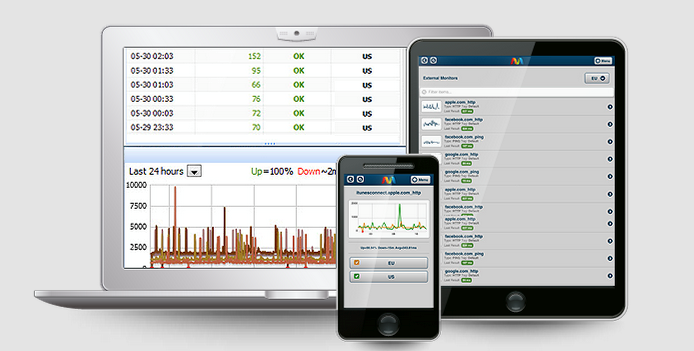Website Performance Optimization: Key Speed Strategies
By Alex Carter on October 24, 2024
Optimizing website performance is crucial for ensuring a fast, efficient, and user-friendly experience. Slow-loading pages can frustrate visitors, reduce engagement, and lower conversion rates. A well-optimized site not only enhances user satisfaction but also improves search engine rankings and minimizes bounce rates.
Several factors influence website speed, including server response times, content delivery methods, file sizes, and code structure. Improving these aspects helps provide a smooth experience across all devices, especially as mobile browsing continues to rise. Making these adjustments ensures that users can access content quickly and efficiently, leading to better overall website performance.

What is Website Speed Optimization?
Improving website speed involves several strategies to ensure pages load quickly. A faster website enhances user experience, keeps visitors engaged, and increases conversion rates while reducing bounce rates.
When a page loads faster, users are more likely to stay and take action. Even a one-second delay can impact conversions, as visitors tend to leave sites that take too long to load.
Performance also varies between desktop and mobile devices. Desktops typically load pages faster due to better processing power, stable high-speed connections, and more efficient browser resource management. However, with mobile devices making up over 63% of global web traffic, optimizing for mobile speed is just as important—if not more. Search engines prioritize mobile performance, so ensuring a fast-loading mobile site is essential for visibility and ranking.
Evaluating Website Performance: Key Metrics to Consider
To make significant changes, it is necessary to comprehend how well a website is performing right now. Evaluating the components that affect visitors’ perceptions of speed and dependability is the first step in optimizing a website.
Analyzing important variables that affect search visibility and user experience is one of the best ways to assess performance. Core Web Vitals, which gauge important elements of page loading and interaction, should receive the majority of attention:
- Largest Contentful Paint (LCP): Determines how quickly the largest element on a page becomes visible;
- First Input Delay (FID): Assesses how quickly a page responds to user interactions;
- Cumulative Layout Shift (CLS): Measures the stability of visual elements to prevent unexpected movement.
Beyond these, additional metrics provide more detailed insights into a website’s efficiency.
- Time to First Byte (TTFB) measures how quickly a server responds after receiving a request;
- DNS Lookup Speed determines how fast a domain name is converted into an IP address;
- Time to Interactive (TTI) tracks how long it takes for a webpage to become fully functional and responsive for users.
Analyzing these metrics helps identify areas for improvement. For instance, a slow LCP suggests delays in rendering critical content, which might be caused by unnecessary code blocking its appearance. Similarly, a sluggish TTFB could indicate issues with the website’s hosting or server response times, signaling the need for configuration adjustments.
Effective Strategies for Faster Website Performance
It takes a methodical approach to improve website speed, beginning with an evaluation of existing functionality. A meaningful improvement is ensured by methodically addressing the many aspects that affect loading times.

Assess Current Performance
Before making changes, a thorough evaluation of how a site loads and handles content is essential. Performance assessments should consider both technical data and real-world user experience. Accessing the site from multiple devices helps identify potential bottlenecks that may not appear in automated reports.
Prioritize Key Improvements
Once performance issues are identified, addressing the most impactful ones first is the most effective strategy. For example, if a page takes too long to start loading, server-related concerns such as hosting configurations or domain resolution should be reviewed before focusing on visual elements. Optimizing the most influential factors ensures that visitors are not discouraged by slow initial loading times.
Review Hosting Options
The choice of hosting service plays a crucial role in website speed. Several hosting types influence performance differently:
- Shared Hosting: Resources are distributed among multiple websites, which can slow down performance, especially during traffic surges;
- VPS (Virtual Private Server): Offers better resource allocation than shared hosting but may still experience slowdowns under heavy loads;
- Dedicated Hosting: Provides the highest level of performance by allocating resources exclusively to a single site, making it ideal for high-traffic websites.
Upgrading to a higher-tier hosting service or moving to a more efficient provider can greatly increase performance if a website has slowdowns often. Optimizing the structure and resource use of the website may assist speed up loading times even more if hosting isn’t the main problem.
Use a Content Delivery Network (CDN)
A Content Delivery Network (CDN) consists of multiple servers spread across various locations to deliver web content based on user proximity. When a website is hosted on a single server, all visitor requests are processed by the same system, leading to slower load times, especially for users far from the server.
A CDN directs user requests to the nearest server, improving response speed and overall website performance. While implementing a CDN can be costly, it is a highly effective way to optimize loading times.
Upgrade to a More Efficient Hosting Solution
Web hosting plays a crucial role in website performance. The three main types of hosting include:
- Shared Hosting – The most affordable option, where multiple websites share CPU, disk space, and RAM. However, performance can be slower due to resource distribution;
- Virtual Private Server (VPS) Hosting – A virtualized server with dedicated resources, allowing better performance and customization. Ideal for websites with moderate traffic or eCommerce platforms experiencing traffic spikes;
- Dedicated Server – A high-performance solution where an entire physical server is reserved for a single user. While expensive, it offers full control and maximum speed.
Cloud-based dedicated hosting is another option available to businesses from companies like Google Cloud, Microsoft Azure, and AWS. This choice provides flexibility and scalability since hybrid cloud solutions enable a combination of cloud and on-premises resources. Serverless architecture is an additional option that does away with the necessity of physical server management.
Selecting an appropriate hosting solution is essential for ensuring a stable online presence. Poor infrastructure can lead to website downtime and inefficiencies, affecting performance and reliability. Among the top reasons businesses fail, outdated technology and slow website speeds can disrupt user experience and reduce revenue. Investing in optimized hosting helps maintain consistent performance and supports business growth.
Optimize Image Sizes for Faster Load Times
High-quality images enhance user engagement, but large files can slow down a website. To maintain visual appeal while improving performance, consider:
- Compressing photos utilizing applications such as ImageOptim, JPEGmini, or Kraken to minimize file size without sacrificing quality;
- Use HTML responsive image features like <srcset> and <sizes> to adapt pictures according to the user’s device.
Reduce the Number of Plugins
Plugins add functionality to websites, but excessive use increases resource consumption, slowing down performance and creating security risks. Over time, unused or outdated plugins may accumulate, further impacting efficiency.
Conduct a performance audit to identify resource-intensive plugins. Removing unnecessary ones and replacing inefficient options with lightweight alternatives can improve website speed. Prioritizing high-quality plugins that minimize script loads and database queries is recommended. Keeping all necessary plugins updated ensures optimal performance and security.
Minimize JavaScript and CSS Files
A high volume of JavaScript and CSS files results in multiple HTTP requests, which browsers must process individually, leading to slower load times. Reducing these requests enhances website performance.
Combining JavaScript and CSS files into single, consolidated files reduces the number of HTTP requests. Various tools, such as WillPeavy, Script Minifier, or Grunt, can quickly minify and optimize HTML, CSS, and JavaScript files for better efficiency.
Minify JavaScript and CSS for Faster Load Times
Reducing the size of JavaScript and CSS files improves website performance by minimizing unnecessary code. Minification removes:
- White space characters, line breaks, comments, and extra semicolons;
- Unused functions and variables;
- Longhand CSS selectors that can be shortened.
Smaller file sizes lead to faster load times and improved efficiency. While manual minification is possible, various tools automate the process. For WordPress websites, WP Rocket offers built-in minification capabilities to improve optimization.

Enable Website Caching
When multiple users access a website simultaneously, server response times may slow down due to increased processing demands. Caching helps by storing a static version of the site, reducing the need for repeated rendering with each visit.
The caching method depends on the platform. WordPress users can implement W3 Total Cache or W3 Super Cache plugins, while VPS and dedicated server environments offer built-in caching configurations. Shared hosting environments may not always support caching, limiting optimization options.
Implement GZIP Compression
GZIP compression reduces the size of transferred data by up to 70%, significantly improving website speed. It minimizes HTTP request and response content before transmission, with browsers decompressing files upon receipt. This method is widely supported and can be applied to all website files.
Other compression methods include Brotli, used by 39% of websites, and Deflate, utilized by only 0.6%. Server compatibility should be verified, as hosting providers may impose restrictions. If compression is not enabled, hosting documentation provides guidance on activation, often requiring minor code modifications or utility installation.
Optimize the Database in CMS
Content management systems (CMS) accumulate large amounts of stored data, including comments, blog posts, and plugin-related information, which can slow down website performance. Regular database optimization reduces unnecessary data and improves efficiency.
Each CMS has specific optimization tools. For WordPress, plugins like WP-Optimize help remove redundant entries and improve database performance.
Minimize Web Font Usage
Web fonts enhance design but increase the number of HTTP requests to external sources, impacting page load times. Optimizing performance involves using modern font formats like WOFF2, which offers better compression, and including only the necessary character sets and styles to reduce font file sizes.
Identify and Address 404 Errors
A 404 error occurs when a page no longer exists, leading to unnecessary server requests. These errors can be detected using external tools such as Xenu’s Link Sleuth or the 404 Redirected Plugin for WordPress.
Once identified, 404 errors should be evaluated based on traffic levels:
- If a broken link receives no traffic, it can be left as is;
- If users still access the missing page, redirect external links and correct internal links to maintain a smooth browsing experience.
Implementing these measures enhances website speed, improves efficiency, and optimizes user experience.
To efficiently identify and manage 404 errors, using broken link checker tools can simplify the process by scanning websites for broken links and providing actionable insights. These tools help ensure that outdated or missing pages do not impact user experience or search rankings.
Minimize Redirects
Redirects generate additional HTTP requests, slowing down website performance. Reducing or eliminating unnecessary redirects helps improve speed. A site scan using tools like Screaming Frog can identify existing redirects. Each redirect should be evaluated for necessity, with only essential ones retained to optimize efficiency.
Implement Prefetching Techniques
Prefetching enhances performance by preloading resources based on anticipated user actions. Modern browsers support this feature by default, but strategic implementation can further improve responsiveness. UX specialists and developers can provide browser hints to optimize prefetching.
There are three primary types of prefetching:
- DNS Prefetching – Speeds up page loading by pre-resolving domain names to IP addresses;
- Link Prefetching – Preloads pages that visitors are likely to visit, such the page where they add things to their shopping cart;
- Prerendering – Renders entire pages or key elements before a user interacts with them.
Effective prefetching requires an in-depth analysis of user behavior to ensure accurate predictions and optimal performance improvements.
Prioritize Mobile Performance
Mobile internet usage continues to grow, with 294.55 million mobile users in the U.S. in 2023, a figure projected to reach 324.25 million by 2029 (Statista). Additionally, a HubSpot survey of web traffic analysts indicates that 41% of site traffic comes from mobile devices, surpassing desktop at 38%.
With more people browsing and shopping on mobile devices, ensuring a fast and responsive mobile experience is essential. Simply displaying a desktop site on mobile can lead to slow load times and poor interaction. Developing a mobile-native site improves speed, usability, and engagement, providing a smoother experience for a growing mobile audience.
Assess DNS Speed
Domain Name Server (DNS) response time directly affects Time to First Byte (TTFB) and overall site speed. A slow DNS increases loading delays. Free online tools can compare DNS provider performance to identify potential bottlenecks. Some hosting providers offer built-in DNS services, while others require a separate DNS provider. Evaluating these options ensures optimal performance.
Enable Asynchronous Loading
By default, many website elements load synchronously, meaning each script or service must fully load before the next one begins. This sequential process increases page load times. Asynchronous loading allows CSS and JavaScript files to load simultaneously, improving efficiency. Many CMS platforms provide built-in settings or plugins to enable asynchronous loading for faster performance.
Limit Web Fonts
Web fonts play an important role in website design, but they can negatively impact performance, especially when multiple fonts or extensive character sets are used. Each additional font requires an HTTP request to an external source, increasing load times and affecting user experience. To improve page speed, reducing the number of fonts can help minimize the time needed to load a page.
Selecting fonts that are optimized for performance further reduces resource consumption and ensures that a website remains functional and responsive. Keeping both design quality and efficiency in mind allows for a visually appealing website without causing unnecessary delays in loading time.
Detect and Remove Inefficient Plugins
Plugins enhance website functionality but can negatively affect performance, especially when loading excessive assets or executing complex database queries. A performance audit should include a review of installed plugins to identify those that slow down the site.
To maintain optimal speed:
- Retain only necessary plugins;
- Use updated, lightweight versions that minimize resource usage.
This is particularly relevant for WordPress websites, where plugin efficiency plays a crucial role in performance.
Implement Expires Headers for Faster Loading
Expires headers improve loading times for returning visitors by defining how long cached site resources remain valid before requiring an update. Adding expires headers to the .htaccess file reduces unnecessary server requests, improving efficiency. Expires headers help browsers serve cached content instead of reloading resources, reducing the need for repeated requests. This decreases server load and enhances user experience by ensuring that visitors receive up-to-date content without unnecessary delays. Proper cache management enhances website responsiveness while ensuring visitors receive the most up-to-date content.
Conclusion
Website performance optimization is essential for improving user experience, engagement, and search rankings. Slow loading times can negatively affect conversion rates and increase bounce rates, making it critical to implement strategies that enhance speed and efficiency.
Key factors influencing website performance include server response times, file sizes, caching, DNS resolution, and code efficiency. Addressing these elements through proper hosting, content delivery networks, image compression, and code minification helps improve load times.
Regular performance assessments using metrics such as Core Web Vitals, Time to First Byte (TTFB), and DNS lookup speed allow for continuous improvements. Optimizing for mobile users is also crucial, given the increasing share of mobile traffic in overall web usage.
Posted in blog, Monitoring
Alex Carter
Alex Carter is a cybersecurity enthusiast and tech writer with a passion for online privacy, website performance, and digital security. With years of experience in web monitoring and threat prevention, Alex simplifies complex topics to help businesses and developers safeguard their online presence. When not exploring the latest in cybersecurity, Alex enjoys testing new tech tools and sharing insights on best practices for a secure web.
